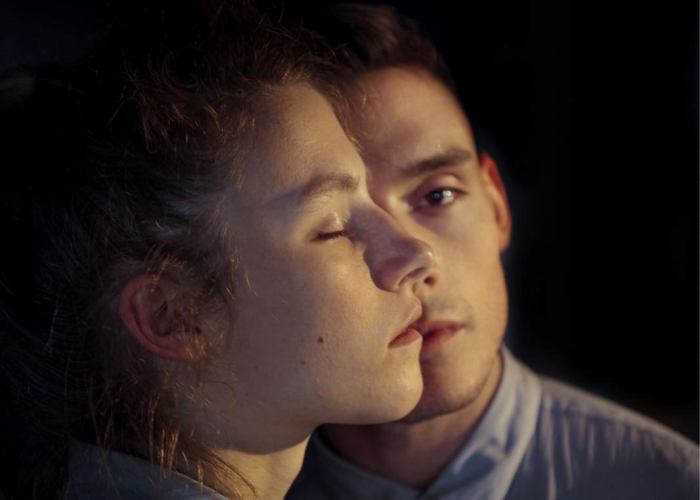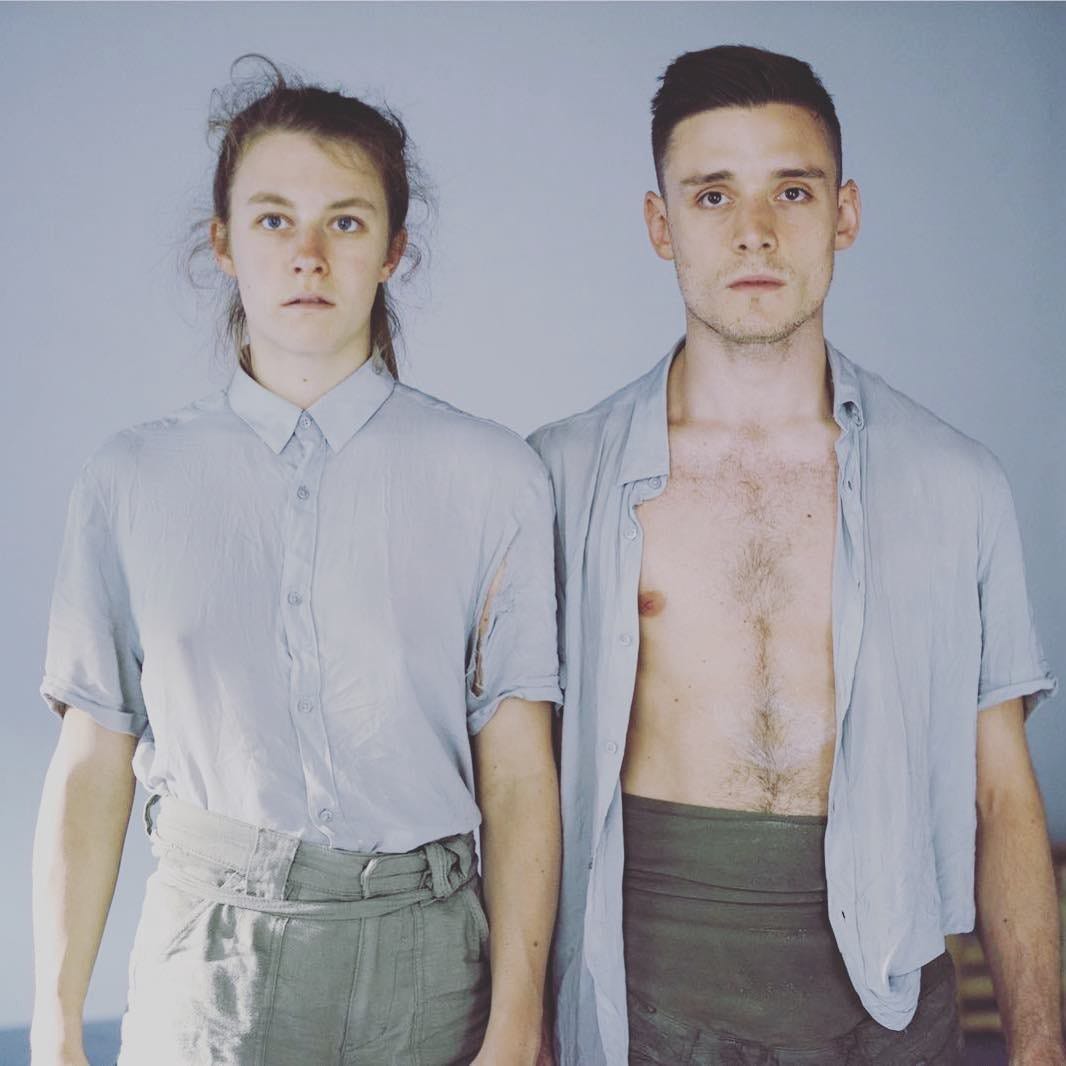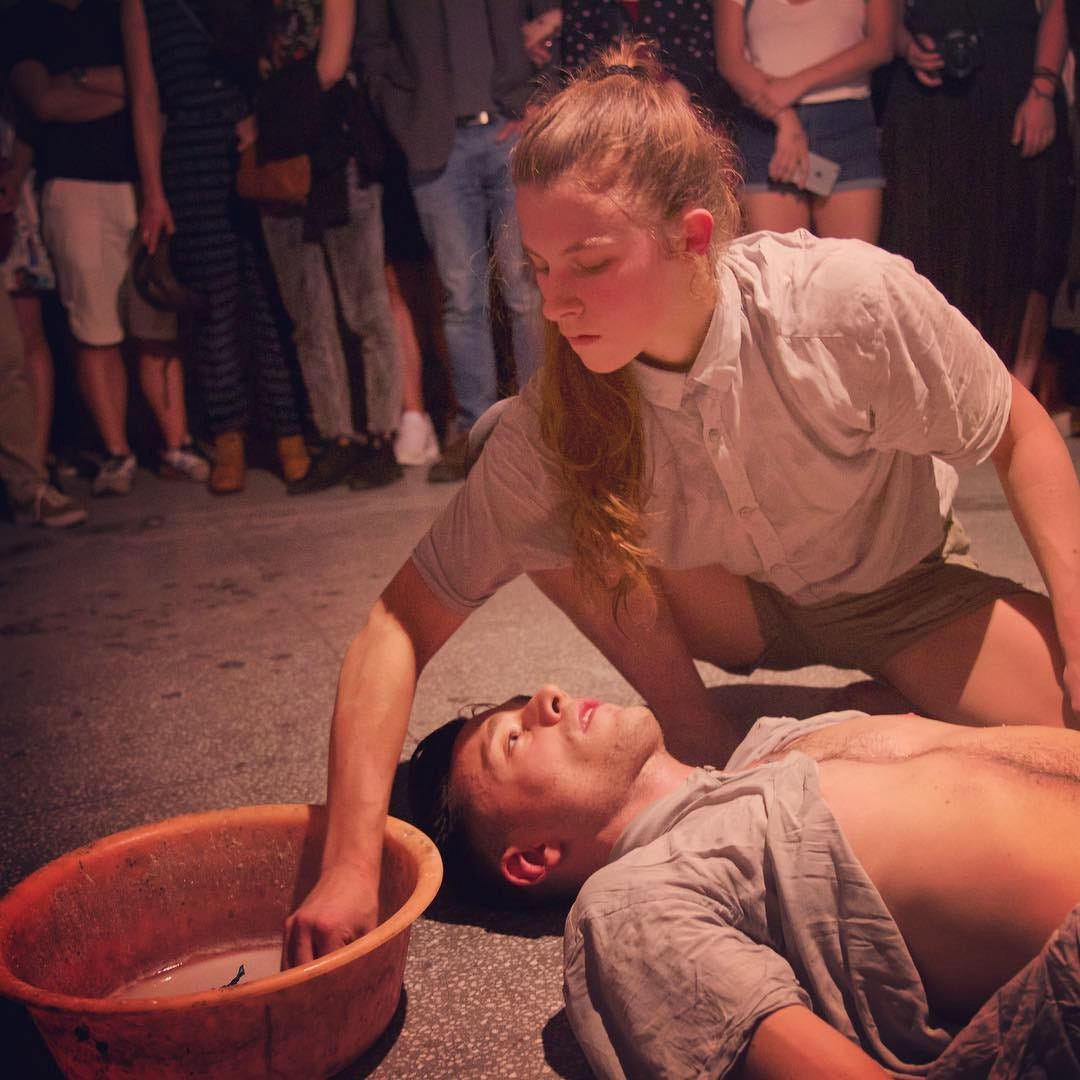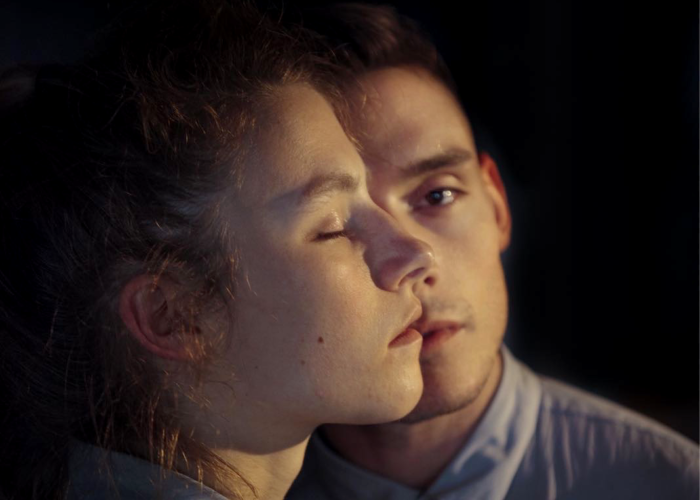
The dance-theatre piece doesn’t to add up to more than the sum of its parts
In the old days, it was customary to keep a canary in a coal mine, because the bird would die quicker than a human would when exposed to toxic fumes; its death would let the humans know when it was time to evacuate.
Back when I worked at Hollister, there used to be a joke among employees that we were the canaries in the coal mine. Between the low lighting and the heavy, choking perfumes diffused throughout the store, the comparison seemed apt. Of course, for a retail environment, this was considered less than ideal, making shopping there too unpleasant for more than a few moments. But in another setting, using thick scent as a deliberate design decision to make an audience viscerally uncomfortable and bring them into a show’s world is a far more ambiguous application. Such a choice might get some mileage at first but ultimately alienate the audience.
Campfire, the brainchild of veteran Sleep No More performers Tony Bordonaro and Ingrid Kapteyn, attempts to draw the audience in with a “scent sculpture” by Andrew Everett. A sort of balletic “The Walking Dead,” it is an intimate dance piece with post-apocalyptic themes. Originally performed in an office building under construction in China, this first US mounting at The Tank has restaged it in more typical black box theater setting while still trying to maintain its immersive elements.

Bordonaro and Kapteyn are masterful dancers; their precision and expressiveness were commendable. Intimate, sparsely decorated and lit, and idiosyncratic, the performance, in theory, has everything needed to draw an audience deeper into ballet. But as a complete work, the whole was less than the sum of its parts. While certainly immersive, the scents used were overpowering at first, with guests tearing up and coughing gently, trying not to distract from the performance. Two scents were used: one, used in the more tender second half of the performance, had a cozy, smoky smell that matched the themes well, but the first scent, resembling a harsh industrial cleaner, actually took me out of the setting. Originally the show was site specific in a larger office under construction during its China run; perhaps the scents needed to be toned down for the limited space. Diegetic lighting (that is, lighting existing within the show’s universe like the flashlights the actors used) also blinded the audience from certain vantage points.
Get Blake Weil’s stories in your inbox
Join Medium for free to get updates from this writer.
SubscribeSubscribe
And while the performance was thought-provoking, the ambiguity of the scenario left the piece both hard to follow (especially considering the difficulty seeing under the aforementioned harsh lighting), and physically uncomfortable to view. With only the context that resources were scarce in this world and that we were in a post-apocalyptic future, and little information given about each performer’s role, each movement became its own puzzle; is she spinning while hyperventilating because it symbolizes a universal panic? Or is she a specific character and the scent sculpture diegetic? This sequence of events would be tough to follow on its own, but in such harsh circumstances, watching the piece felt like an impossible chore.
Audience participatory elements were equally difficult to follow. Bordonaro and Kapteyn would loom over the audience, staring closely at them; were we supposed to feel judged? Were they asking us for something? That feeling of not knowing quite how to play along became most pronounced when they pulled about five audience members on stage, posing them in tableau before seeming to completely forget about them. After the show ended, still sitting posed, I spoke with a few of them, who seemed to have no idea why they were brought on, what they were intended to have done (if anything) besides sit there, and even less of a clue what they represented.

And while violence is often to be expected in a post-apocalyptic world, a sequence towards the middle of the show depicting intense sexualized violence — including the apparent drugging of the female character, and the manipulation and abuse of her inert body by the male — was, bluntly, a disservice to the audience. A few uncomfortable members shuffled out, not to return, and they shouldn’t have been put in that position.
Experiments in theatre are necessary to make it better, refining its strengths and expanding its boundaries. But within immersive and intimate works, just like in a lab, safety needs to come first. What could have been an opportunity to connect more deeply with a work ended up severing the audience completely. Perhaps Campfire will bloom into something spectacular with more depth than its current state as a mood piece, but for now, I’m left confused, gently coughing, and most of all disappointed in the lack of care on display.
Learn more about Campfire on the show’s web site.
NoPro is a labor of love made possible by our generous Patreon backers: join them today!
In addition to the No Proscenium web site, our podcast, and our newsletters, you can find NoPro on Twitter, Facebook, YouTube, Instagram, in the Facebook community Everything Immersive, and on our Slack forum.
Office facilities provided by Thymele Arts, in Los Angeles, CA.















Discussion